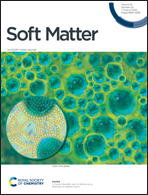Empowering microfluidics by micro-3D printing and solution-based mineral coating†
Abstract
Fluid–solid interaction in porous materials is of tremendous importance to earth, space, energy, environment, biological, and medical applications. High-resolution 3D printing enables efficient fabrication of porous microfluidic devices with complicated pore-throat morphology, but lacking desired surface functionality. In this work, we propose a novel approach to additively fabricate functional porous devices by integrating micro-3D printing and solution-based internal coating. This approach is successfully applied to create energy/environment-orientated porous micromodels that replicate the μCT-captured porous geometry and natural mineralogy of carbonate rock. The functional mineral coating in a 3D-printed porous scaffold is achieved by seeding calcite nanoparticles along the inner surface and enabling in situ growth of calcite crystals. For conformal and stable coating in confined pore spaces, we manage to control the wetting and capillarity effects during fabrication: (i) capillarity-enhanced nanoparticle immobilization for forming an adhered seeding layer; (ii) capillary pore-throat blockage mitigation for uniform crystal growth. These transparent micromodels are then used to directly image and characterize microscopic fluid dynamics including wettability-dependent fluid propagation and capillarity-held phase transition processes. The proposed approach can be readily tailored with on-demand-designed scaffold geometry and appropriate coating recipe to fit in many other emerging applications.



 Please wait while we load your content...
Please wait while we load your content...